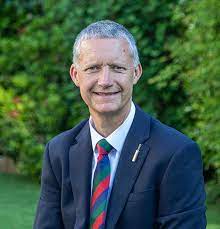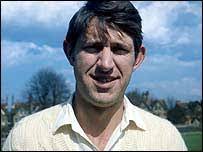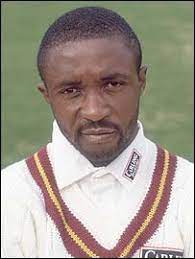Over the years, many fathers and sons have distinguished themselves on the first-class cricket field. We can straight away think of Micky and Alec Stewart, of Surrey and England, Chris and Stuart Broad, Joe Hardstaff senior and junior at Notts, Jim Parks senior and junior at Sussex, WG Grace and WG Grace junior, Sir Len and Richard Hutton, and around the world such families as the Cairnses in New Zealand, the Marshes in Australia, the Mohammads in Pakistan, the Pollocks in South Africa, the Nawabs of Pataudi, Everton Weekes and David Murray of West Indies and many others. And that’s not even mentioning grandfathers and grandsons like Denis and Nick Compton. In most cases, we have to admit that the offspring are not quite as good as their Dads, although you could certainly argue that the Stewarts and the Broads, for a start, disprove that theory.
At Kent, we pride ourselves on being one big family, but all in all we have not had many examples of multi-generational representation. The most obvious example is, of course, the Cowdrey family, with paterfamilias Colin and two of his sons, Chris and the much-lamented Graham all being stalwarts of the county side for many years, with grandson Fabian also getting a brief look-in. However, I don’t think anybody would dispute that Dad was the better cricketer, a problem which many sons of truly great sportsmen have had to grapple with. Look at Liam Botham, who became a successful rugby player after a short spell at Hampshire proving how hard it is to live in the shadow of a brilliant father.
Another possible exception to the rule of father being better than son is perhaps the Ealham family, where Dad Alan, a truly wonderful outfielder and a much underrated batsman as well as being a fine captain, did not earn the international recognition than his son Mark did. Mark, once unfairly condemned as a mere pie-chucker, nevertheless played eight Tests and 64 ODIs for England and his best bowling figures of 5 for 15 against Zimbabwe at the turn of the century were at the time the best figures ever returned by and England bowler in an ODI. His two sons, George and Tom, are excelling at age-level cricket, and could soon provide a third generation of first-class Ealham cricketers.
I think we should also mention the Downtons, father George and son Paul, both Kent wicket-keepers – another family who are blasting a hole in my theory that fathers are usually more successful than sons. Then of course there’s the Blaker family, father Richard who played at the turn of the last century and helped Kent win their first ever Championship in 1906, and twin daughters Barbara and Joan who were pillars of Kent’s women’s cricket before and after the Second World War.


However, my favourite story of fathers and sons in Kent colours features the Luckhurst family. Brian was one of the best opening batsmen we have ever had, although in his first game for the county in 1958 he batted lower down the order and even took a wicket with his left arm spin. His son Tim is less well known, but in as much in love with cricket as his father ever was. In 2021 he combined the task of being national chairman of the Lord’s Taverners charity with the captaincy of Kent’s Over-50s team. In 1986, as a young man starting out with St Lawrence Highland Court, in a side which included Paul Farbrace, Vince Wells, Steve Goldsmith and Graham Cowdrey among others, he would come to watch the county game at Canterbury whenever he could. And being an opportunist, he always kept his kit in the boot of his car. On 6 August 1986, an injury crisis struck the Kent side on the morning that the game against Hampshire was due to start. Kent’s opening attack was down to its bare bones, with Dilley, Alderman and Jarvis all off games with a sick note. Eldine Baptiste, too, was recovering from a strain and had been unavailable for the 2nd XI game starting on the same day. There was a feeling that his injury was not as severe as he made out, and that the fact that the 2nd XI game was a long way away in Harrogate might have exacerbated the strain, so with minutes to go before the toss was due, Baptiste was phoned and asked if he thought he could play at Canterbury. He decided he could, but couldn’t get to the ground before the match began. Sod’s Law, Hampshire won the toss and decided to bat, so Kent were starting one fielder short. Enter Tim Luckhurst, who spoke to his Dad, then Cricket Administrator at the club, who told him to get his kit on and go out and field as twelfth man. After only half an hour, Baptiste was able to take over, but at pretty well the same time Alan Igglesden tore a muscle in his side, so Tim Luckhurst found himself fielding all day. During the afternoon session, Derek Underwood suffered a muscle spasm in his neck and could not carry on after tea, so Brian Luckhurst, then 47 years old, came out to field as thirteenth man, and for the first and only time in Kent cricket history, a father and son were on the field together in a county match. Colin and Chris Cowdrey both turned out for Kent in 1976, but never played together, so the Luckhursts’ achievement is unique.

For the record, the match was drawn, and Baptiste bowled 41 injury-free overs. Thanks largely to an opening stand of 191 between Mark Benson and Simon Hinks, Kent were able to declare at 431 for 8, without having to ask either Iggy or Deadly to bat. Hampshire’s second innings, when they barely managed to secure a draw, included rare first class wickets for Neil Taylor (1 of only 16 wickets in his career), Derek Aslett (1 of only 17) and Chris Tavaré (1 of only 5 wickets – this was his career best bowling: 1 for 3 in 5 overs). All in all, a statistically odd match.
Who will be the next father and son to play together? Stevo has still got twenty seasons in him, so don’t rule him out.
0 Comments